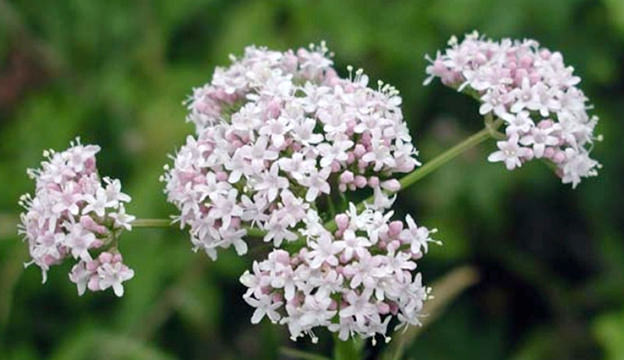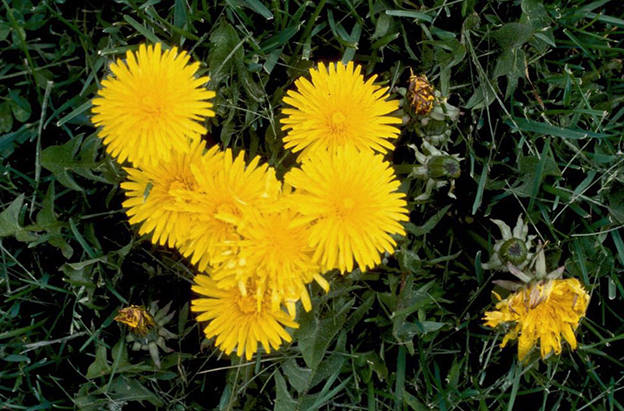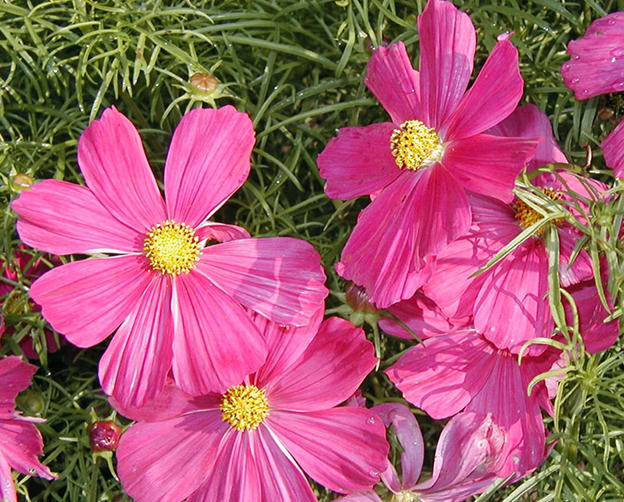
Do you make room in your garden for flowers? Last year, I let go of my need for a purpose for every plant and encouraged beauty, as well. Lo and behold, the vegetables did better. We spent more time in the garden as a family, collecting flowers to decorate the dinner table right along with the evening’s salad. We watched with our children as the beneficial insects hunted. When we chose to work in the garden alone, these insects sang of our mutual friendship. If that sounds good to you, give some of these flowers a try in your garden this year!
1. Valerian (Valeriana officinalis)
Valerian (pictured above) is an important plant for biodynamic farmers. As it grows in your garden soil, it has the ability to fix the soil’s phosphorus levels.
What does phosphorus mean to you? It’s the P in the “NPK” content of your fertilizer. Phosphorus is one of the nutrient precursors your soil needs to be able to absorb and hold nutrition properly. When your vegetables aren’t flowering very well, seem to be stunted or carry a yellowish tinge on their leaves, you might have a deficiency in phosphorus.
Valerian is a perennial in Ohio, where I live, but you can grow it in USDA zones 4 to 9. Its feathery leaves are beautiful and in mid- to late-summer they give rise to a white, foamy flower held high in the air. If you pinch off the bloom and take it inside the house to fill your favorite vase, it will encourage greater root development.
The root is harvested in the fall and used in herbal preparations to help the nervous system. You may recognize it most often as part of a sleep formula, but it also provides great relief for muscle spasms and can even benefit the health of your heart.
2. Wormwood (Artemisia spp.)

Most artemisias, such as tarragon and dusty miller, are characterized by a silvery tinge to their leaves and wormwood is no different. You can select either annual or perennial wormwoods from your local garden center and plant them near vegetables in the cabbage family to improve their quality and repel white flies. A wormwood tea made from the leaves and flowers can be sprinkled over soils where slugs are a problem in spring and fall to repel these pests.
We like southernwood (A. abrotanum), and plant it near our orchard to repel the fruit-tree moth. Any member of this family can be grown for its addition to the landscape or for cut-flower arrangements, but you might like it best in the winter, as it can be dried and stored in drawers and closets as a moth repellant for your clothes.
3. Borage (Borago officinalis)

This is a beautiful, albeit hairy-looking, plant. The deep-blue edible flowers are irresistible when added to salads or candied to top cakes. We plant this self-seeding annual in many places around our farm. Amongst the tomatoes it will help repel tomato hornworms and attract bees. We love to plant it with another common companion, the strawberry, to improve berry production.
Borage has been used to support the health of the adrenal glands, to lift the spirits and to strengthen the resolve of those who are run down by life. It’s hard not to love it dried in a tea, unless perhaps you’ve had it fresh in a salad, where its cucumber-like freshness outshines any other preparation.
4. Dandelion (Taraxacum officinale)

All right, I know, many of you may not consider this plant to be an ornamental, but I would ask that you look at this companion plant in a different light. Its deep tap root does not compete with the more shallow root systems of your garden annuals. Dandelion uses that deep root system to hold the soil, keep soil moist and bring up nutrients that would otherwise have leached out of reach.
In the garden, allow dandelions to grow just until they are ready to bloom and then pull and compost them. If they bloom, they are known to inhibit the growth of plants around them by exhaling ethylene gas. However, you can allow them to bloom in a nearby yard, as they provide an early nectar source for lady beetles.
Dandelions are not only cheery, but they are a very important pollen and nectar source for the Honey bee. You may eat every last bit of the plant. The blooms are delicious in salads or batter-fried, the greens make a great salad or wilted greens, and the roots are amazing in soups. Your liver and kidneys will thank you for preserving this part of your lawn.
5. Cosmos (Cosmos bipinnatus)

Our favorite garden addition has to be our cosmos. This annual flower is very easy to seed just after the danger of frost or left to self-seed. My children enjoy picking flowers for mommy while they gather a tomato snack. These colorful beauties attract beneficial insects, such as hoverflies, parasitic wasps, tachinid flies and bees.




